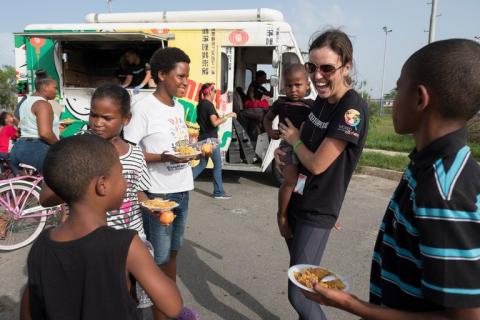I’ve been writing about food since the late 1990s, when the food editor at The San Francisco Chronicle lured me to California for a new beat that combined food and traditional news reporting. I was happy to give up what had been a steady diet of crime stories, City Hall meetings and feature editing.
Besides, food had become cultural currency. Restaurants increasingly were the point of a night out, not a precursor to something else. The links between what we ate and our health were becoming stronger. Farmers’ markets were springing up and the organic movement was growing fast.
So I eagerly jumped into food writing while keeping my hard news reporter’s lens. The pull to merge those worlds has only intensified in my 13 years at The Times, where my editors consider food an essential part of our report.
I still love finding a good recipe, but I have long maintained that every news story has a food angle. I’m talking not about obvious stories like the farm bill, childhood obesity and school lunches, but about those unexpected places where food plays an essential role that can be overlooked. One only has to consider those pivotal moments in the civil rights battles of the 1960s that happened at lunch counters throughout the South.
More often than not, food offers a powerful, surprising and sometimes uplifting path through difficult news events. This was clear when I traveled to Puerto Rico recently to figure out how one chef fed more people there than any aid organization or government agency did.
José Andrés, the larger-than-life, Michelin-starred chef who owns 27 restaurants, flew in on one of the first commercial planes to land in Puerto Rico after Hurricane Maria hit Sept. 20. He quickly realized that people were going hungry, so he and a few local chefs started cooking. It didn’t matter that barely anyone on the island had power, or that the only water in those early days came from bottles.
Before he knew it, he was giving food to the Salvation Army to deliver and dispatching food trucks to neighborhoods no aid agency had reached. I saw children ride their bikes behind his food trucks, happy to get their only hot meal of the day. I sat with him in a rural church and watched him cry as people prayed for him because no one else was sending food.
The story of emergency food relief in Puerto Rico shed light on the desperation across the island and underscored the lack of government aid, especially in the days immediately following the storm.
Weeks earlier, when hurricanes hit Texas and Florida, I saw a food story there, too. Never before had so many American kitchens been taken out of commission at once. So I spent time with cooks in Houston who were trying to regain a sense of normalcy by making kitchens out of gas grills, borrowed microwaves and coolers full of ice.
Similarly, after Hurricane Katrina, I traveled to New Orleans several times to report on how its food culture was recovering. Just three weeks after the flood, we found only one restaurant open, but cooks were making red beans and rice on the street. For a city that rises and falls on what’s for dinner, taking inventory of its restaurants was one way to measure both devastation and resilience.
A food story also can bring a fresh look to other types of news stories. The standoff between an oil company and protesters at the Standing Rock Sioux Reservation over a new pipeline in North Dakota had dragged on for months. With winter approaching and the crowds of protesters growing, I wondered how they were going to feed everyone.
I bundled up and headed to the protest camp, where I found an odd mix of vegans in Ugg boots drinking yerba mate inside a donated Army mess tent, and Lakota and Pueblo cooks making buffalo soup and red chili stew in a string of makeshift cafes.
Even Trayvon Martin’s death in 2012 brought an unexpected food angle. He was killed on his way home from a store, a packet of Skittles in his pocket. The candy soon became a symbol of racial injustice and underscored his youth and the circumstances surrounding his death.
Don’t worry. Those of us who work in the Food section will continue to write restaurant reviews, recipe features and profiles that tell stories about culture, family and commerce. We will continue to help people buy and cook good food. That’s our bread and butter, as it were.
But when news breaks, you’ll find me at the table.
A version of this article appears in print on November 1, 2017, on Page A2 of the New York edition with the headline: Food Is Often the Way In.


Spread the word